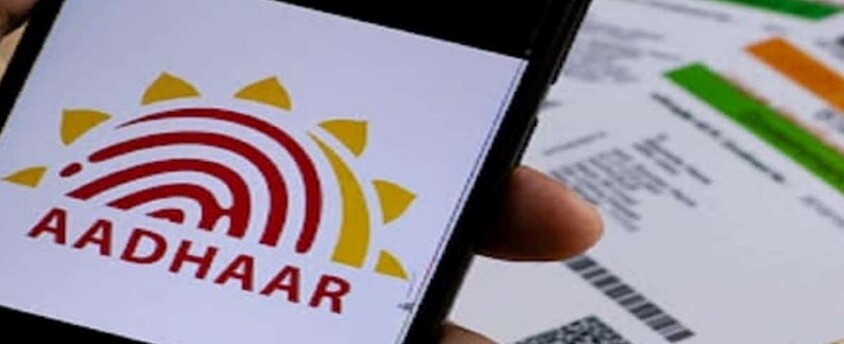Aadhaar Authentication Rules
24, Apr 2023

Prelims level : Election & Electoral Reforms
Mains level : GS-II Structure, organization and functioning of the Executive and the Judiciary Ministries and Departments of the Government; pressure groups and formal/informal associations and their role in the Polity.
Why in News?
- The Ministry of Electronics and Information Technology (MeitY) has proposed rules to allow entities other than Government Ministries and Departments to use Aadhaar authentication to promote ease of living and enable better access to services for citizens.
What does the Rule say?
- Any entity other than a ministry or department that desires to use Aadhaar authentication needs to submit its proposal to the concerned ministry/department at the Centre or state level with justification. The proposal is forwarded to UIDAI, which will review and decide on the application.
What is Aadhaar Authentication (AA)?
- Aadhaar authentication is a process that verifies the identity of an individual using their Aadhaar number. It is mainly used for availing government services and schemes.
Entities currently allowed to perform AA:
- Government ministries and departments; Some private entities like banks and telecom companies (for KYC authentication and only if UIDAI was satisfied with regard to standards of privacy and security)
Purpose of AA:
- For the interest of good governance, preventing leakage of public funds, enablement of innovation, the spread of knowledge, and promoting ease of living and enabling better access to services for residents.
Legal provision:
- Aadhaar Authentication for Good Governance (Social Welfare, Innovation, Knowledge) Rules, 2020
Concerns:
- SC (2018) struck down Section 57 of the Aadhaar Act which allowed the use of Aadhaar data by private companies – to establish the identity of an individual for being “unconstitutional”
What is Aadhaar?
- A 12-digit unique identity for every Indian individual, including children and infants
- Enables identification for every resident Indian.
- Establishes uniqueness of every individual on the basis of demographic and biometric information.
- It is a voluntary service that every resident can avail irrespective of present documentation.
- Each individual will be given a single unique Aadhaar ID number.
- Aadhaar will provide a universal identity infrastructure which can be used by any identity-based application (like ration card, passport, etc.)
About the new regulations:
- Updating the documents:
- As per the regulations earlier, residents who were older than 15 years at the time of enrollment were recommended to update their biometric data every 10 years.
- The process of updating documents is not mandatory.
- Ensuring accuracy
- This process will help in ensuring the accuracy of information in the Central Identities Data Repository (CIDR).
- Demographic information
- The amendment of the Aadhaar regulation is limited to updating demographic information and does not involve biometric data such as fingerprints.
Issues with Aadhar:
- Aadhaar act allows cancellation of Aadhaar number for any reason by the government and citizens have no recourse.
- A Centralized database is a concern because once it is compromised everyone is at risk.
- There is no ID or address verification and there is no means of identifying fakes.
- There is no data protection law in place in India.
- Enrollment software hacks allowed foreign nationals to create Aadhaar numbers thus creating a national security risk.
- UIDAI does not have a monitoring mechanism but only an audit mechanism.
- Data goes to third parties vulnerability increases due to that.
Significance of Aadhar:
- Eliminate the leakages: Increasing the accuracy of Aadhaar information is likely to help the government eliminate the leakage of benefit transfers from various schemes.
- Jhan Dhan Yojana: Aadhaar Card is used as the major document of proof when opening a bank account under the Pradhan Mantri Jhan Dhan Yojana in the nation.
- Direct Benefit Transfer: Aadhar Card linked bank accounts will get their set of LPG Subsidy directly accredited in the bank account.
- Monthly Pension and Provident Fund: a person needs to link their Aadhaar Card to their respective pension account and provident fund.
- Passport and Voter ID: Aadhaar Card will relieve you of the lengthy procedure while obtaining Passport.
Unique Identification Authority of India (UIDAI) & Aadhar:
- Aadhaar Act & Establishment of UIDAI:
- The UIDAI is a statutory authority established under the provisions of the Aadhaar (Targeted Delivery of Financial and Other Subsidies, Benefits and Services) Act, 2016 (“Aadhaar Act 2016”) by the Government of India, under the Ministry of Electronics and Information Technology (MeitY).
- Need of UIDAI: UIDAI was created to issue Unique Identification numbers (UID), named as “Aadhaar”, to all residents of India. The UID had to be –
- Robust enough to eliminate duplicate and fake identities, and
- Verifiable and authenticable in an easy, cost-effective way.
- Under the Aadhaar Act 2016, UIDAI is responsible for:
- Aadhaar enrolment and authentication, including operation and management of all stages of Aadhaar life cycle,
- Developing the policy, procedure, and system for issuing Aadhaar numbers to individuals and
- Perform authentication and the security of identity information and authentication records of individuals.






